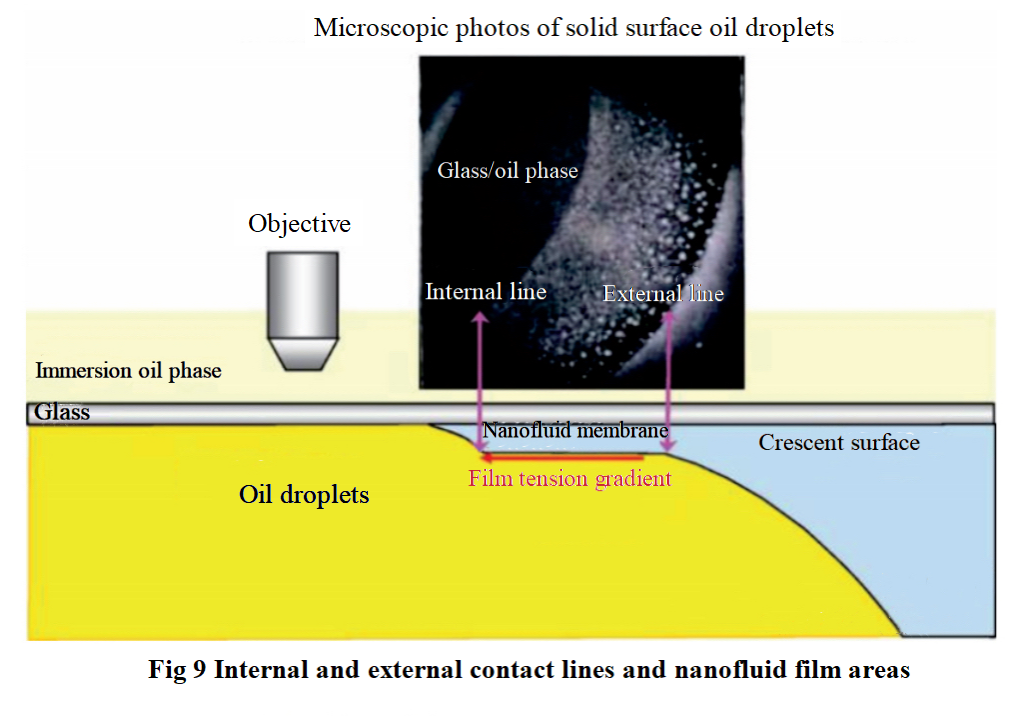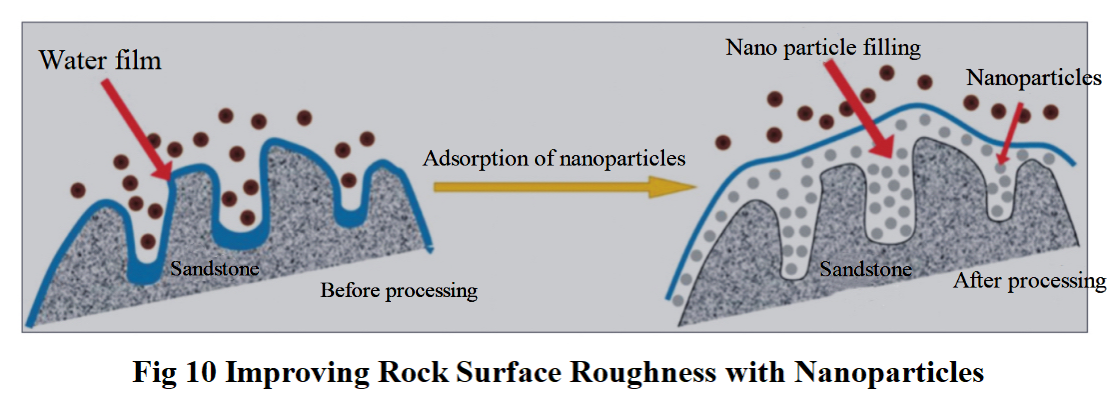Case Studies
Case Studies
- The Application Prospects of DeepSeek Large Model in Petroleum Engineering(Part 1)
- The Application Prospects of DeepSeek Large Model in Petroleum Engineering(Part 2)
- Development and Performance Evaluation of Efficient Asphalt Dispersant (Part 1)
- Development and Performance Evaluation of Efficient Asphalt Dispersant (Part 2)
- Development and Performance Evaluation of Efficient Asphalt Dispersant (Part 3)
- Research and Application Status of Drilling Fluid Plugging Materials (Part 1)
- Research and Application Status of Drilling Fluid Plugging Materials (Part 2)
- Research and Application Status of Drilling Fluid Plugging Materials (Part 3)
- Application and Exploration of Intelligent Technology for carbon dioxide transportation pipelines under the dual carbon background(Part 1)
- Application and Exploration of Intelligent Technology for carbon dioxide transportation pipelines under the dual carbon background(Part 2)
3.5 Structural Separation Pressure formed in the Three-phase Contact Area of Oil-water-solid
In the past decade, nanofluids have been considered a candidate for significantly improving crude oil recovery. Research on wetting phenomena is generally based on the famous Young equation or modified models applicable to rough surfaces. However, the Young equation is based on the following assumption: the droplet shape is spherical, the liquid thickness at the contact line between the droplet and the solid is 0, and the spherical contour of the droplet remains unchanged. However, experiments have shown that the wetting phenomenon of nanofluids on solid-phase surfaces contradicts this assumption, making the Young equation no longer applicable to describing the wetting phenomenon of nanofluids on solid-phase surfaces. The traditional chemical oil recovery mechanism cannot explain the rapid diffusion rate of nanoparticles on the solid surface during the nanofluid oil recovery process. To explain this phenomenon, Wasan et al. proposed the concept of structural separation pressure (SDP) in 2003.
SDP is caused by the ordered arrangement of nanoparticles in a closed area (wedge-shaped film), which is limited by the wedge-shaped film structure on nanoparticles (Figure 7), rather than free movement of nanoparticles from the bulk phase. Based on the principles of Orn-stein-Zernike statistical mechanics, the analytical expression of SDP generated by spherical nanoparticles can be calculated. The research results indicate that as the volume fraction of nanoparticles increases, the osmotic pressure and structural separation pressure within the three-phase contact restricted area also increase. The volume fraction is inversely proportional to the diameter of the nanoparticles, and the SDP depends on the diameter, temperature, volume fraction, and other properties of the nanoparticles. When the thickness of the wedge-shaped membrane is smaller than the diameter of a single nanoparticle, the absolute value of structural separation pressure is equal to the absolute value of osmotic pressure, and the higher the osmotic pressure, the higher the SDP.
.png)
In the wedge-shaped membrane, SDP exhibits an oscillatory decay trend from the vertex to the outer phase. The SDP value at the vertex of the wedge-shaped membrane can reach 50000 Pa (Figure 8), greatly enhancing the diffusion behavior of the nanofluid along the three-phase interface.
.png)
Kondiparty et al. observed two distinct contact lines on the surface of the glass when the nanofluid started the oil droplets from the top of the oil droplets (Figure 9): the external contact line (between the oil droplets, solid, and water film) and the internal contact line (between the oil droplets, solid, and oil-water mixed film).

Among them, the external contact wire is a conventional three-phase contact wire, and the internal contact wire is the boundary where the extended edge of the nanofluid film meets the oil-solid interface. Zhang et al. revealed that the thick oil film formed after driving by nanofluids is unstable and can break into oil rings. Then, under the action of structural separation pressure, the oil rings separate from the solid surface to form spherical oil droplets. Nanofluids can use this mechanism to peel off the remaining oil film on the rock surface, thereby significantly improving the oil recovery rate.
The research results of Wasan and Kondiparty et al. indicate that only when the concentration of spherical nanoparticles exceeds 10 wt% and 8 wt% SDS needs to be added to the nanofluid, will structural separation pressure form within the three-phase constrained structure (wedge-shaped thin film), which serves as one of the main oil displacement mechanisms of the nanofluid. At present, many research literature shows that the volume fraction of spherical nanoparticles is much lower than 10 wt%. In this case, it is debatable whether the structural separation pressure can be the main mechanism for nanofluid oil recovery. In recent years, Qu et al. have studied that sheet-like nanofluids can form two types of contact lines in three-phase restricted contact areas even at ultra-low usage concentrations (0.005 wt%): internal contact lines and external contact lines. Oil droplets can be peeled off from the solid surface in a relatively short time. This research achievement breaks through the limitation that only high concentration spherical nanoparticles can form structural separation pressure, providing possibilities for the application of sheet-like nanofluids in mines.
3.6 Reduce Blood Pressure and Increase Injection
Nano pressure reduction and injection enhancement technology is a method of carrying specific nano particle materials into the reservoir through a dispersed medium and adsorbing them on the surface of the throat, changing the wettability and microstructure of the pore wall surface, and achieving the goal of pressure reduction and injection enhancement. Di et al. proposed the nano lattice slip effect to explain the reason for the pressure reduction and injection enhancement of nanofluids. Hydrophobic nanoparticles can replace the hydration layer and form a lattice arrangement on the surface of the pore throat, resulting in superhydrophobicity on the surface of the pore throat. The injected water cannot approach the surface of the pore throat, resulting in water flow slip effect; In addition, the dense arrangement of nanoparticles on the surface of rock pores reduces the chances of contact between the water phase and the rock surface, thereby significantly reducing the flow resistance of the water phase. Chen Yuxiang et al. prepared nano silica powder by the sol gel method, and modified the surface of SiO2 with silane coupling agent. The experimental results of pressure drop and injection increase show that the modified nano SiO2 fluid has higher injection volume and obvious displacement pressure drop rate compared with surfactant solution. Liu Peisong prepared a water-based nanosilicon injection enhancer with a particle size distribution of 6-7 nm. The results of core displacement experiments showed that the water-based nanosilicon injection enhancer increased the permeability of artificial and natural cores by 65.5% and 48%, respectively. In summary, the mechanisms of reducing pressure and increasing injection of nanofluids can be summarized as three: ①expanding the effective radius of pores (Figure 10); ②Superhydrophobic effect; ③Anti swelling performance.

① Expand the effective radius of pores. The surface of reservoir pores and throats carries negative charges, exhibiting hydrophilicity. The surface of clay particles will adsorb a certain thickness of water film. When injected water passes through the formation pores, it will interact with the water film to increase flow resistance, resulting in high injection pressure and difficulty in water injection. After injecting the nanofluid into the formation, the non-polar substances (a large amount of -CH3 on the surface of modified nanoparticles) in the nanofluid drive out the water film, resulting in a thinner water film thickness on the surface of the formation pores, which is equivalent to expanding the effective radius of the formation pores.
② Superhydrophobic effect. Nanoparticles compete with the hydration layer on the pore surface for adsorption, while hydrophobic nanoparticles exhibit high energy states with a large number of unsaturated bonds on their surface and extreme instability of surface atoms, resulting in strong hydrophilicity and binding adsorption ability, Nanoparticles in the formation approach the wall through diffusion, convection, and settlement, and compete with the hydration layer on the pore surface through molecular forces, hydrogen bonding, and other interactions to adsorb and replace the water film on the pore surface, forming a strong hydrophobic adsorption layer that further expands the pore throat and reverses the wettability of the rock, When injected water flows on the surface of reservoir rocks, hydrophobic slip occurs, which reduces the flow resistance of injected water and selectively increases the water phase permeability.
③ Anti swelling performance. Positively charged nanoparticles enter rock pores and adsorb on the surface of rock pores, effectively expanding the pore radius, forming a strong hydrophobic layer, and separating the contact between clay minerals and water, weakening the hydration expansion and diffusion of clay particles, reducing the probability of particle migration blocking formation pores, and thereby reducing water injection pressure, playing a certain role in increasing injection.



